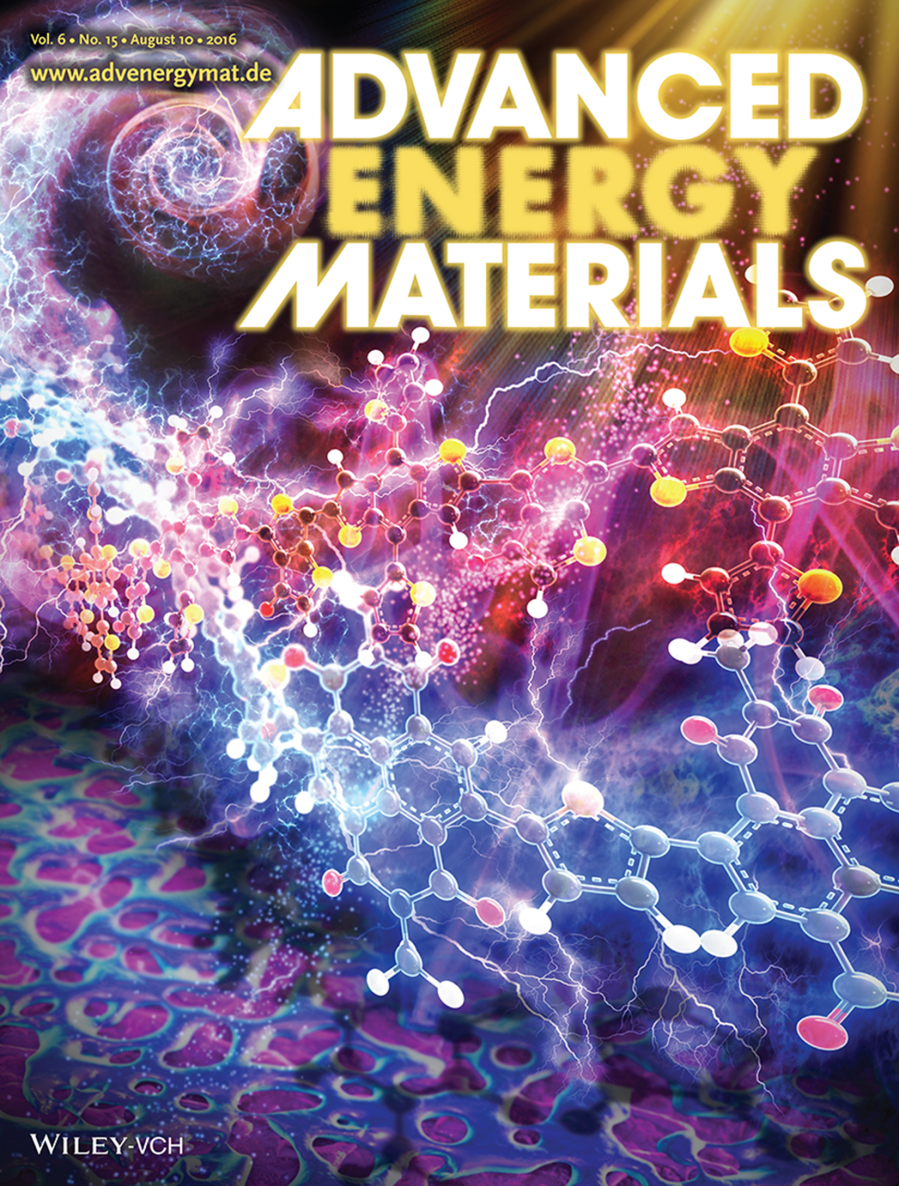- [Inside Front Cover] Controlling Molecular Orientation of Naphthalenediimide-Based Polymer Acceptors for High Performance All-Po
- 관리자 |
- 2016-09-22 12:05:55|
- 7425
- 2016-09-22 12:05:55|
Controlling Molecular Orientation of Naphthalenediimide-Based Polymer Acceptors for HighPerformance All-Polymer Solar Cells
Author: Jihye Jung, Wonho Lee, Changyeon Lee, Hyungju Ahn, Bumjoon J.Kim
Journal: Advanced Energy Materials DOI: 10.1002/aen,.201600504
[ABSTRACT]
Molecular orientation, with respect to donor/acceptor interface andelectrodes, plays a critical role in determining the performance of all-polymersolar cells (all-PSCs), but is often difficult to rationally control. Here, aneffective approach for tuning the molecular crystallinity and orientation ofnaphthalenediimide-bithiophene-based n-type polymers (P(NDI2HD-T2)) bycontrolling their number average molecular weights (Mn) is reported. A series of P(NDI2HD-T2)polymers with different Mn of13.6 (PL),22.9 (PM),and 49.9 kg mol−1 (PH) are prepared by changingthe amount of end-capping agent (2-bromothiophene) during polymerization.Increasing the Mn values ofP(NDI2HD-T2) polymers leads to a remarkable shift of dominant lamellarcrystallite textures from edge-on (PL) to face-on (PH) as well as more than a twofold increase in thecrystallinity. For example, the portion of face-on oriented crystallites isdramatically increased from 21.5% and 46.1%, to 78.6% for PL, PM, and PH polymers. Thesedifferent packing structures in terms of the molecular orientation greatlyaffect the charge dissociation efficiency at the donor/acceptor interface andthus the short-circuit current density of the all-PSCs. All-PSCs with PTB7-Thas electron donor and PH as electron acceptor show the highest efficiencyof 6.14%, outperforming those with PM (5.08%) and PL (4.29%).

| 첨부파일 |
|
|---|

